Home
»
About
»
Производство
Производство
Методы производства оловянной посуды и предметов из олова имеют очень древние корни. Раньше предметы получали, нагревая металлическую плиту для плавки олова. Затем полученный сплав заливали в придуманные формы. Они были земляные, каменные или меловые. В последствии они были заменены на бронзовые и чугунные. После чего, полученный предмет обрабатывался на токарном станке и к нему прикрепляли недостающие детали. И последний этап – финишная обработка.Производство предметов из олова не очень изменилось со временем. Даже сегодня оно является ручным. Также делается сплав, также заливается в формы, также вручную обрабатывается на станке. Затем ручная сборка, спайка и ручная финишная обработка. Для каждого предмета существует своя особая техника.
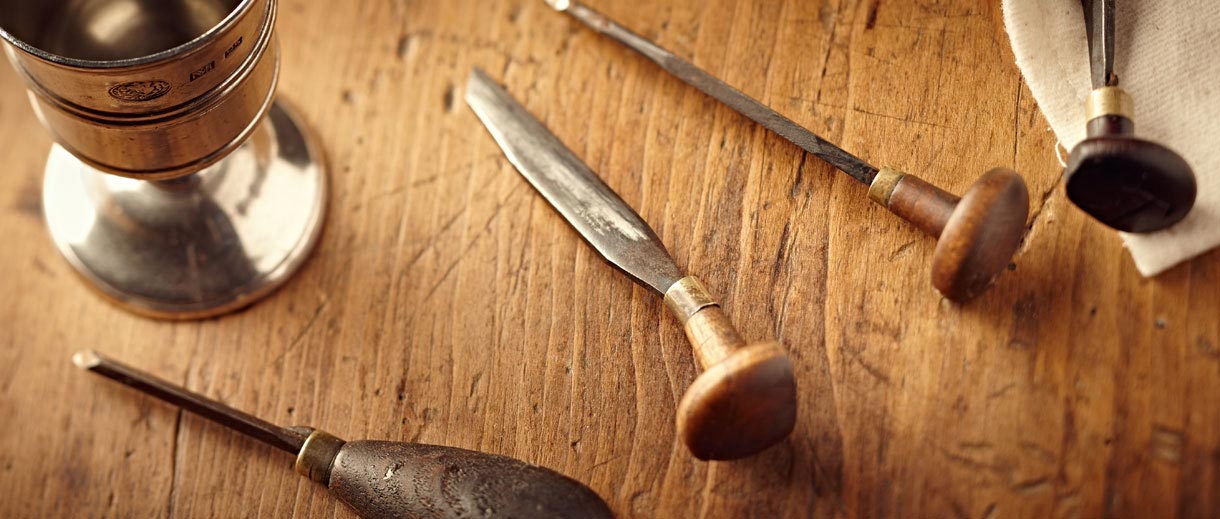
Выразительной особенностью производства «Cosi Tabelini» является то, что проект каждого предмета придумывается владельцами компании и доводится до совершенства мастерами производства. Некоторые этапы производства «Cosi Tabellini»:
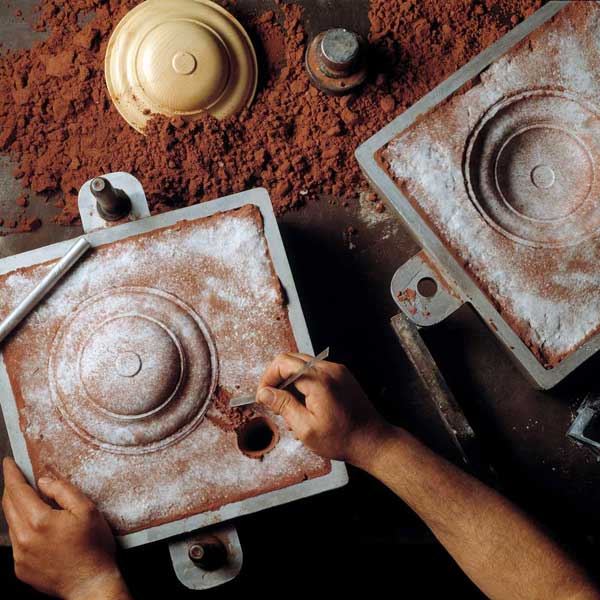 Создание опытного образца: The first prototype can be made of wood, wax, directly in pewter and recently also taking advantage of the rapid prototyping of 3D printers. Got the prototype is necessary to duplicate it to get the pewter model that will serve as a matrix for the creation of the molds. The matrix is usually achieved by using the technique of sand casting as shown in the photograph on the right.
Создание опытного образца: The first prototype can be made of wood, wax, directly in pewter and recently also taking advantage of the rapid prototyping of 3D printers. Got the prototype is necessary to duplicate it to get the pewter model that will serve as a matrix for the creation of the molds. The matrix is usually achieved by using the technique of sand casting as shown in the photograph on the right.
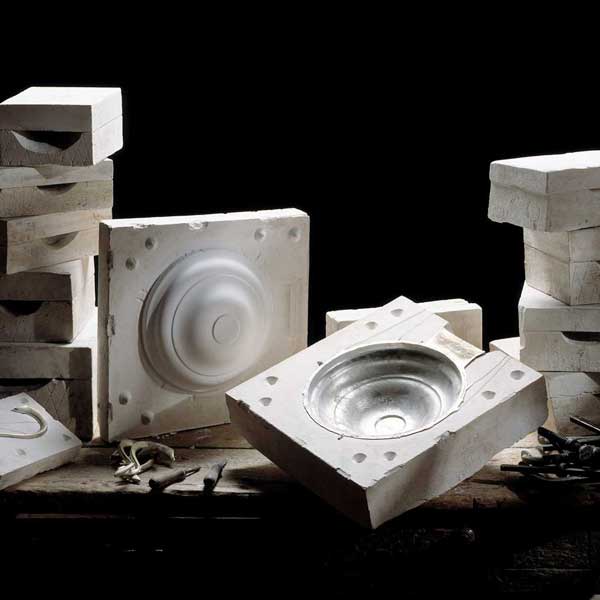 Moulds: Each pewter piece is made up of a number of different moulds; one for the main body, and others for the different components. Some pieces require as many as seven different moulds. Modern moulds are made from silicon rubber, although some of the original iron moulds are still used and sometimes, for small quantities, are also used plaster molds.
Moulds: Each pewter piece is made up of a number of different moulds; one for the main body, and others for the different components. Some pieces require as many as seven different moulds. Modern moulds are made from silicon rubber, although some of the original iron moulds are still used and sometimes, for small quantities, are also used plaster molds.
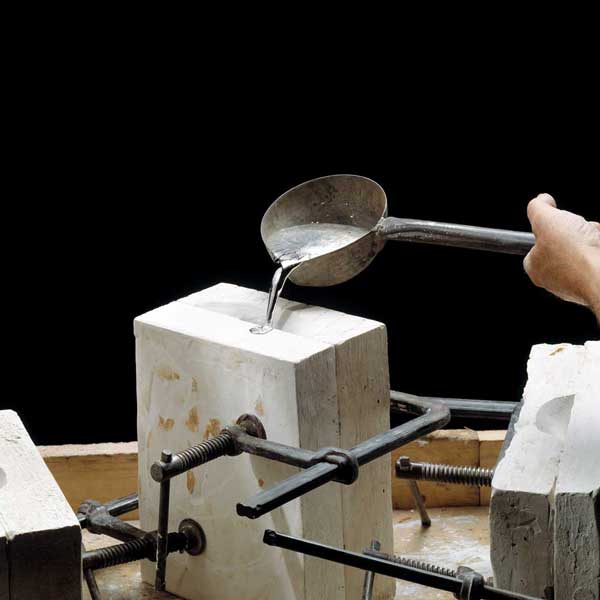 Заливка сплава в форму: The raw materials (tin, copper and antimony) are cut up and heated to 350° in a kiln, and very quickly a beautiful molten liquid is formed, which, using a casting ladle, is poured into mould with extreme care.
Once cooled, the pewter is gently extracted and any superflous lumps and bumps leftover from the casting process are removed.
Заливка сплава в форму: The raw materials (tin, copper and antimony) are cut up and heated to 350° in a kiln, and very quickly a beautiful molten liquid is formed, which, using a casting ladle, is poured into mould with extreme care.
Once cooled, the pewter is gently extracted and any superflous lumps and bumps leftover from the casting process are removed.
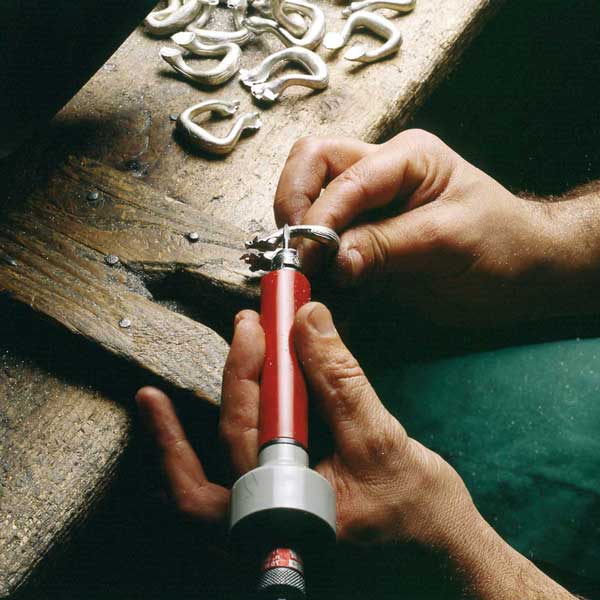 Ручная Сборка предметов: At this point any decorative chiseling an engraving is undertaken, including touchmarks, to enhance the overall character of the object.
Ручная Сборка предметов: At this point any decorative chiseling an engraving is undertaken, including touchmarks, to enhance the overall character of the object.
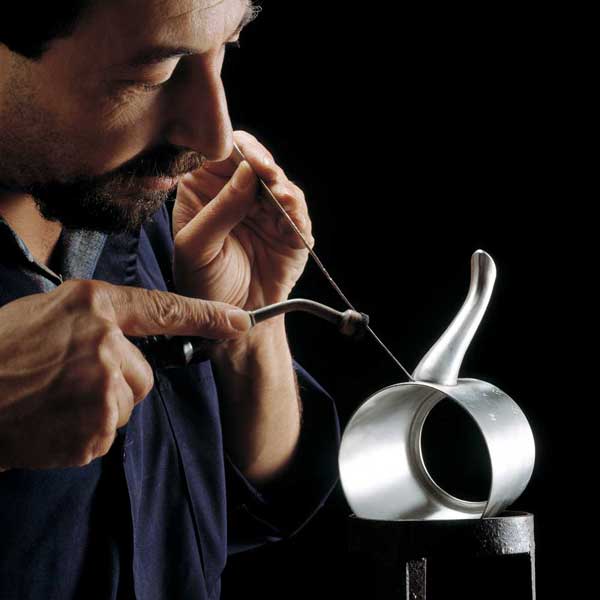 Спайка деталей: Each piece is then assembled, welded and soldered by hand. This is an extremely skilful and technical procedure, especially with pieces designed to hold liquids.
Спайка деталей: Each piece is then assembled, welded and soldered by hand. This is an extremely skilful and technical procedure, especially with pieces designed to hold liquids.
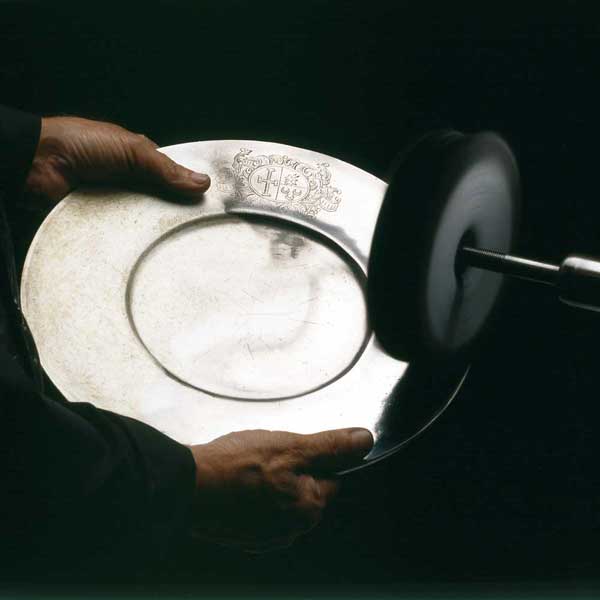 Финишная полировка: By skilled polishing and then rubbing using increasingly fine graded wool, 'finishing' rids the surface of any roughness and imperfections, yet retains the character of the piece. The final buff is undertaken using a fine polishing cloth.
Финишная полировка: By skilled polishing and then rubbing using increasingly fine graded wool, 'finishing' rids the surface of any roughness and imperfections, yet retains the character of the piece. The final buff is undertaken using a fine polishing cloth.